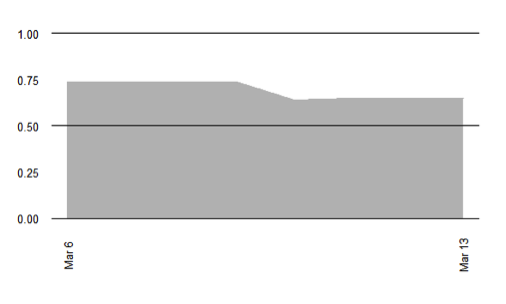March 15, 2014

The Early Warning Project’s primary goal is to assess risks of mass atrocities, but our expert opinion pool lets us glean insights into related issues, too. For example, we can ask experts to predict how international institutions, such as the United Nations or the International Criminal Court, will respond when atrocities occur. Right now, we’re asking our experts to consider whether or not the United Nations Human Rights Council (UNHRC) will adopt a resolution concerning Sri Lanka during its 25th regular session, which began this week and ends March 28. Since the end of Sri Lanka’s decades-long civil war against the Liberation Tigers of Tamil Elam (LTTE) in 2009, that country’s government has faced condemnation for its conduct during the final stages of the conflict and in the years since. Actions that have drawn international rebuke include building a tourist attraction on an alleged killing field, allegedly covering up mass graves, and continued intimidation of Tamil minorities. Al Jazeera America reports that in northern Sri Lanka, where the war was mostly fought, government soldiers are still seen as an occupying force.
Under increasing pressure to atone for alleged atrocities and war crimes committed in its fight against the LTTE, the government of Sri Lanka and has begun its own investigation, which it says will take at least six months. Nevertheless, after Ambassador Stephen J. Rapp visited in late 2013, the U.S. signaled its intention to sponsor a resolution at the 25th regular session of the United Nations Human Rights Council “calling on Sri Lanka to do more to promote reconciliation, democratic governance, justice and accountability” (here and here).
Following the start of the UNHRC session this week, the U.S., U.K., and three other countries submitted a draft resolution that will be voted on at the end of the session. Colombo has aggressively refuted the proposed resolution, claiming that it will only cause further turmoil and division and that it needs more time to conduct its own investigation. Russia and China have recently come out against the proposed resolution and could block its passage if they form a simple majority with other UNHRC members. Presumably bearing these competing pressures in mind, our pool of experts currently puts the likelihood of a resolution being adopted at 65 percent, down slightly from an initial 75 percent when the question opened on March 6.
The adoption of a resolution by the UNHRC would be just one of many attempts at achieving justice and reconciliation and sustaining peace in Sri Lanka. According to a 2012 UN Report,
There can be no lasting peace and stability without dealing with the most serious past violations and without a political response to the aspirations of Sri Lanka’s communities. The UN cannot fulfill its post-conflict and development responsibilities in Sri Lanka without addressing these fundamental concerns.
If a resolution is adopted, should the international community be prepared for the chaos that the Sri Lankan government claims will ensue? It’s unlikely given the adoption of previous resolutions and a lack of turmoil in Sri Lanka. Instead, resolutions have been acknowledged and protested by the Sri Lankan government, yet it continues to be accused of human rights violations and oppressing the nation’s minorities, especially Tamils. Instead, a failure to adopt the resolution could tell us more about shifting interests among UNHRC members. A similar resolution was adopted in 2013 with 25 of 47 members voting in favor, and although the draft recently submitted by the U.S. calls for more accountability, it remains very similar to previous resolutions that the UNHRC has adopted. Update: According to Al Jazzera English,
On Thursday, the UN Human Rights Council adopted a resolution co-sponsored by 41 countries, which allows the Office of the High Commissioner of Human Rights (OHCHR) to monitor progress and undertake a comprehensive investigation into atrocities committed in the months before the end of the war in May 2009. Twenty three countries voted in favour of the resolution, 12 against and 12 abstained from voting.
The final consensus of the expert opinion pool was a 73 percent likelihood of a resolution being passed.
View All Blog Posts